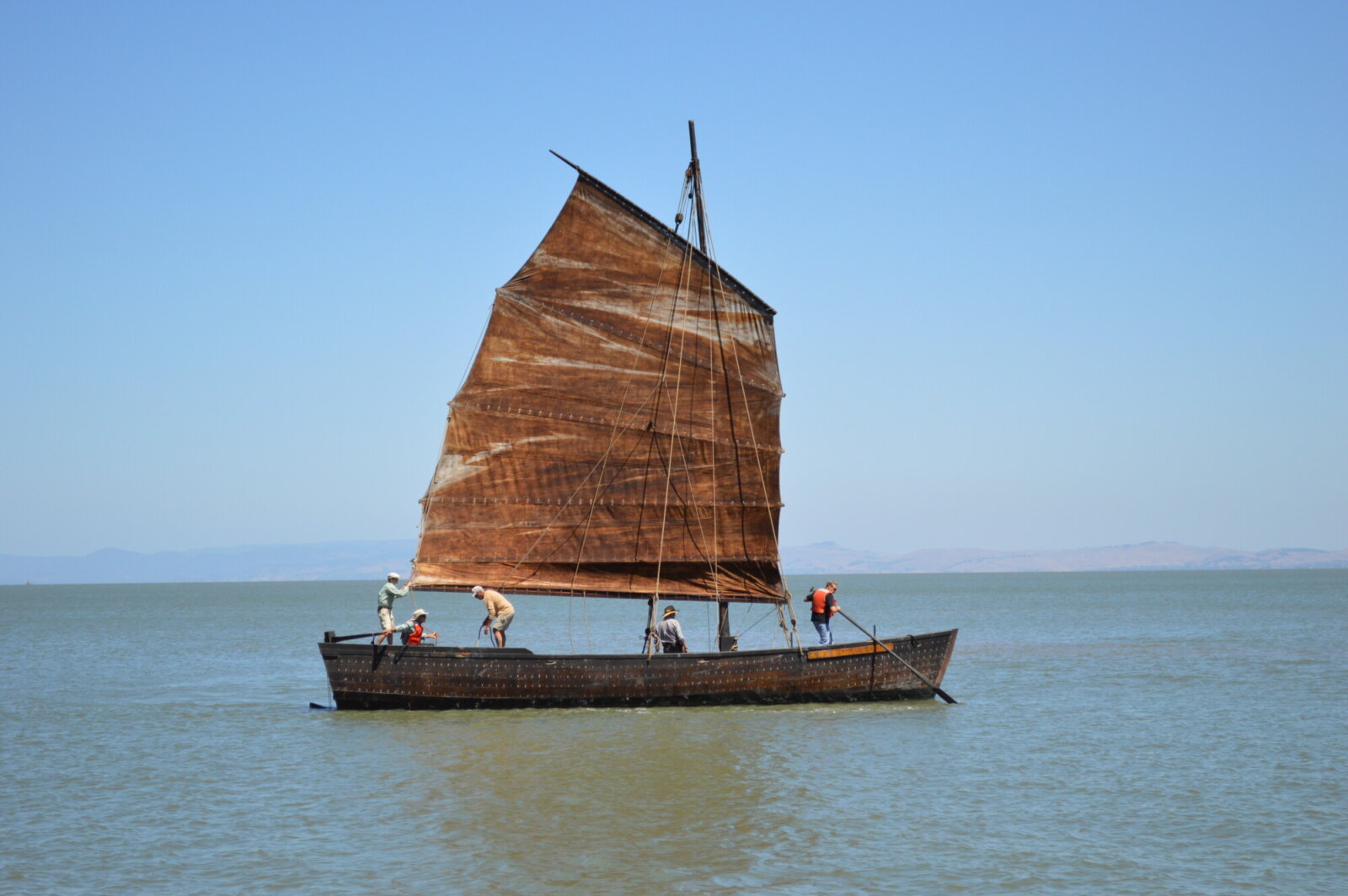
China Camp’s floating visitor
In summer, visit the Grace Quan, the hand-built replica of a Chinese shrimp-fishing junk
During the summer, the Grace Quan is usually anchored at China Camp. It’s a wonderful opportunity to see this beautiful, hand-built replica (a project spearheaded by FOCC board member, John Muir) of the Chinese shrimp-fishing junks floating in the waters where these boats originally sailed. When she’s not at China Camp, the Grace Quan is part of the fleet of historic vessels managed by the San Francisco National Maritime Historical Park, along the city’s waterfront. Whether you see the Grace Quan at China Camp or in San Francisco, you’ll get a glimpse into the past, when junks plied the waters of San Pablo Bay, Chinese fishermen weaving across the calm waters, spreading then pulling in jute nets filled with wriggling shrimp.
The following content is reprinted from the National Park Service’s website.
The Grace Quan is a 43-foot-long replica of a San Francisco Bay Chinese shrimp fishing junk. Between 1860 and 1910, these were the workhorses of the Bay Area’s Chinese-owned dried-shrimp industry. The San Francisco Bay shrimp junks closely resembled vessels from the fishermen’s home waters in Guangdong Province, China.
Most carried a single, five-batten lugsail, a rig that is both efficient and easy to control. The junks also featured a daggerboard forward of the mast, and a rudder which could have its depth adjusted. The diamond-shaped holes in the rudder serve to ease “weather helm,” or strain on the tiller.
When wind was calm, the fishermen could use oars, rowed from the bow, and a long sculling oar, called a yuloh, worked from the stern.
The Grace Quan was built by a team of National Park Service volunteers and staff in the summer of 2003 at China Camp State Park, the site of one of the largest of the historic Chinese shrimp fishing villages in San Rafael.
The design for the Grace Quan was derived from historic photographs and archaeological information. Traditional materials such as redwood planking, forged nails, and caulking made from lime and linseed oil, were used by the boatbuilding crew, as were traditional Chinese boat-building techniques such as bending wood with fire and nailing planks to each other along the plank seams.
The cotton canvas sail was treated using the traditional method of boiling the newly made sail in a vat of hot water and tanning it with the crushed dried bark of tanbark oak trees.
—as published by the National Park Service


